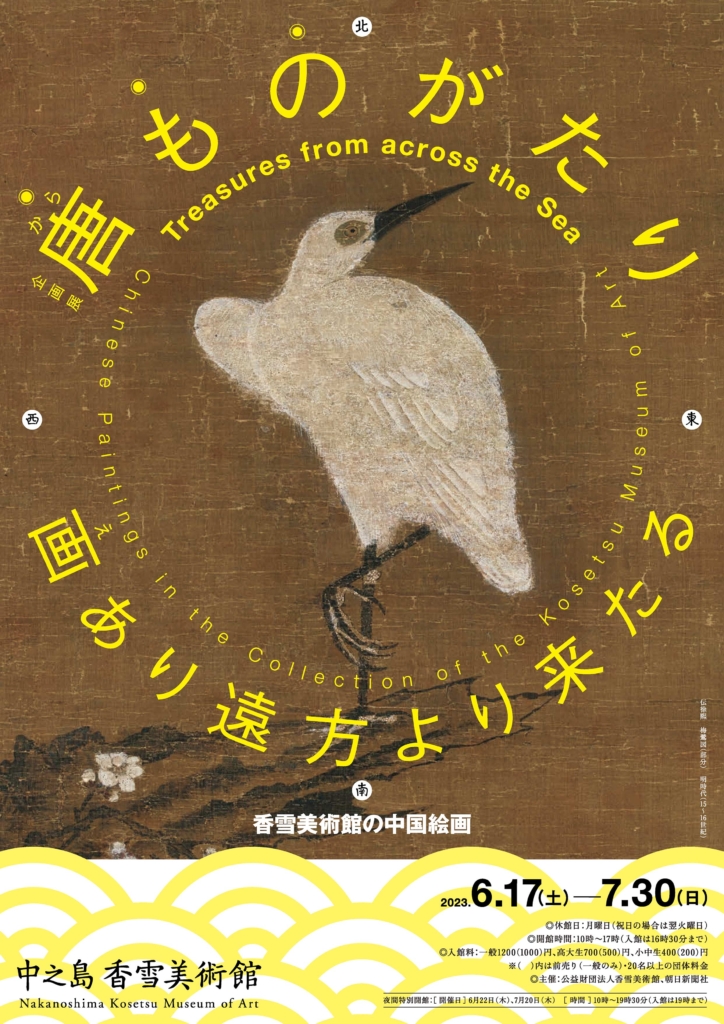Paintings from China have long been prized in Japan as kara-e (Chinese paintings) and karamono (Chinese things), which adorned the alcoves of Buddhist temples and the residences of shoguns and feudal lords. Murayama Ryōhei (1850–1933), the founder of the Asahi Shimbun newspaper agency and an avid art collector, amassed a wide range of paintings brought to Japan from China as well as the Korea Peninsula. These paintings include Budai (J. Hotei), Xianzi (J. Kensu), and other semi-legendary Chinese Chan (J. Zen) priests of the Tang dynasty (618–907); paintings of birds and flowers depicting such birds as egrets and pheasants and flowers as peonies; and landscape paintings with scenic mountains and figures playing by the waterside. A majority of these works are known as naka watari (literally “the middle crossing”), or Chinese paintings that reached Japan by the Edo period (1615–1868). This exhibition showcases these Chinese paintings in the Kosetsu Museum of Art, which have never before been exhibited in a comprehensive manner, together with accompanying appraisal certificates and inscribed boxes. Works from the Muromachi period (1336–1573) painted by Japanese artists, who were influenced by Chinese paintings, will also be featured.
Information about the Exhibition
〈Dates〉
Jun 17 (Sat) 2023-Jul 30 (Sun) 2023
〈Hours〉
10:00-17:00
Until 19:30 on June 22 and July 20.
〈Closed〉
Monday
Open on a public holiday Monday but closed on the following day.
Closed during the New Year holidays and in between exhibitions.
